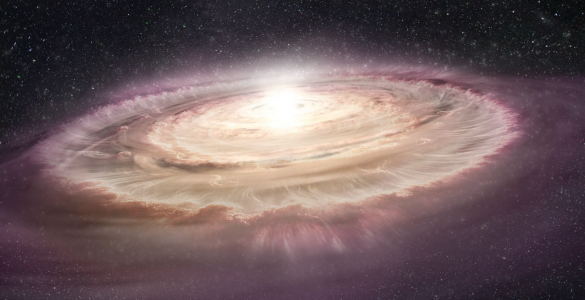Latest NRAO News
News is managed by NRAO News & Public Information. Questions about News? Have a story to share? Want to interview a scientist or create new media about our telescopes?

A groundbreaking discovery has revealed the presence of a blazar—a supermassive black hole with a jet pointed directly at Earth—at an extraordinary redshift of 7.0. The object, designated VLASS J041009.05−013919.88 (J0410−0139), is the most distant blazar ever identified, providing a rare glimpse into the epoch of reionization when the universe was less than 800 million years old. This discovery challenges existing models of black hole and galaxy formation in the early cosmos.

After taking the first images of black holes, the ground-breaking Event Horizon Telescope (EHT) is poised to reveal how…

A new agreement between the Center for Astrophysics | Harvard & Smithsonian (CfA) and the U.S. National Science Foundation…

NGC 1068 is a well-known, relatively nearby, bright galaxy with a supermassive black hole at its center. Despite its…

New observations from the Atacama Large Millimeter/submillimeter Array (ALMA) suggest that planet formation can occur even in harsh stellar…

The vast majority of people within the areas of Virginia and West Virginia collectively known as the National Radio…





